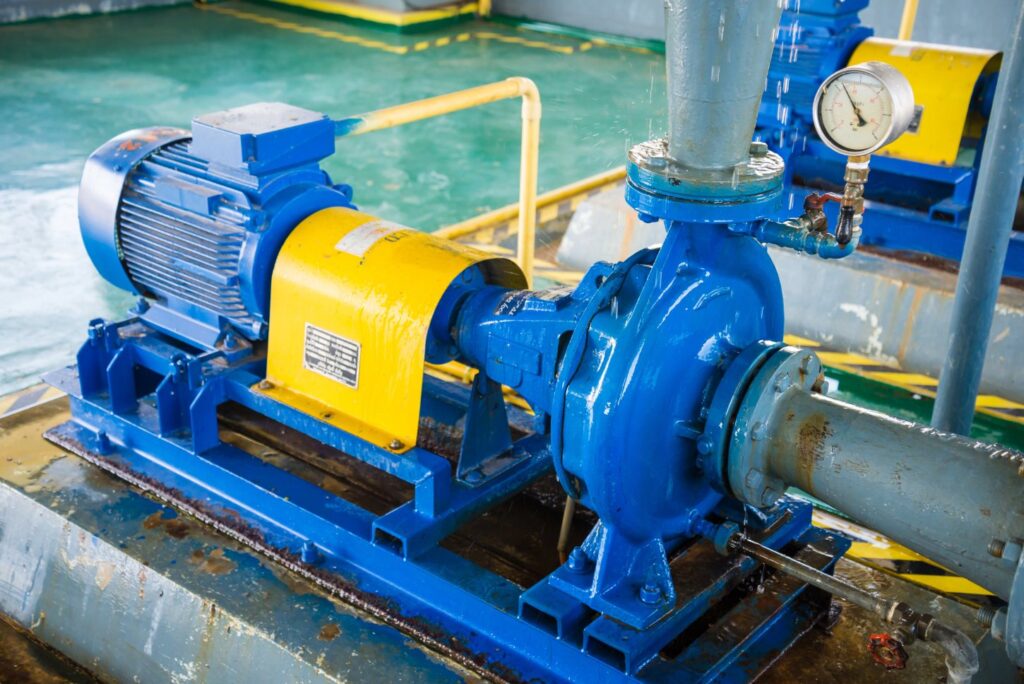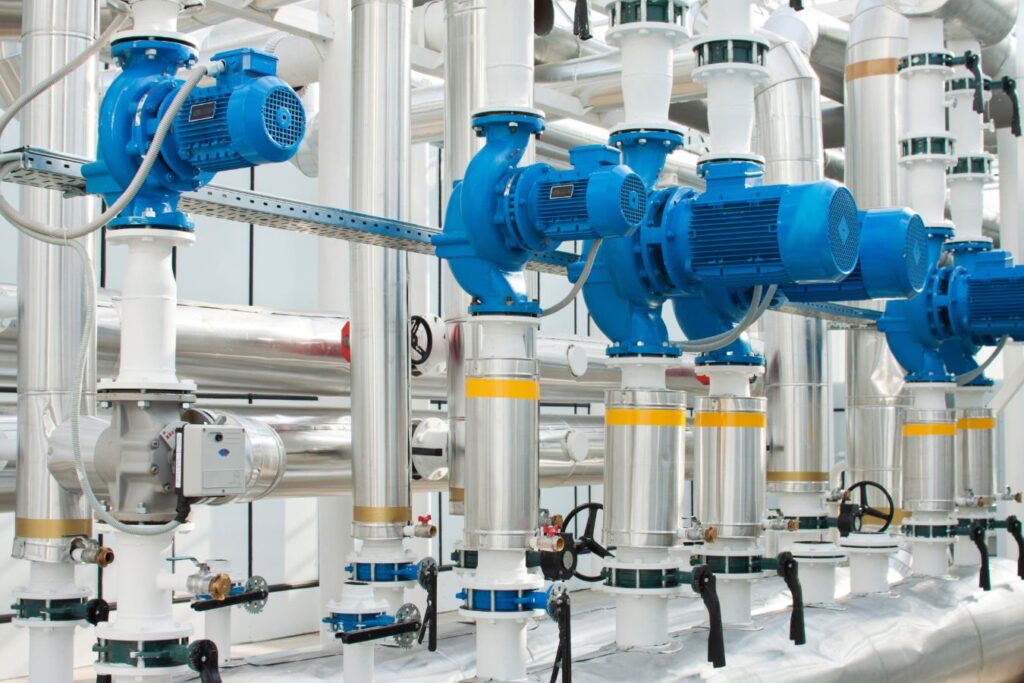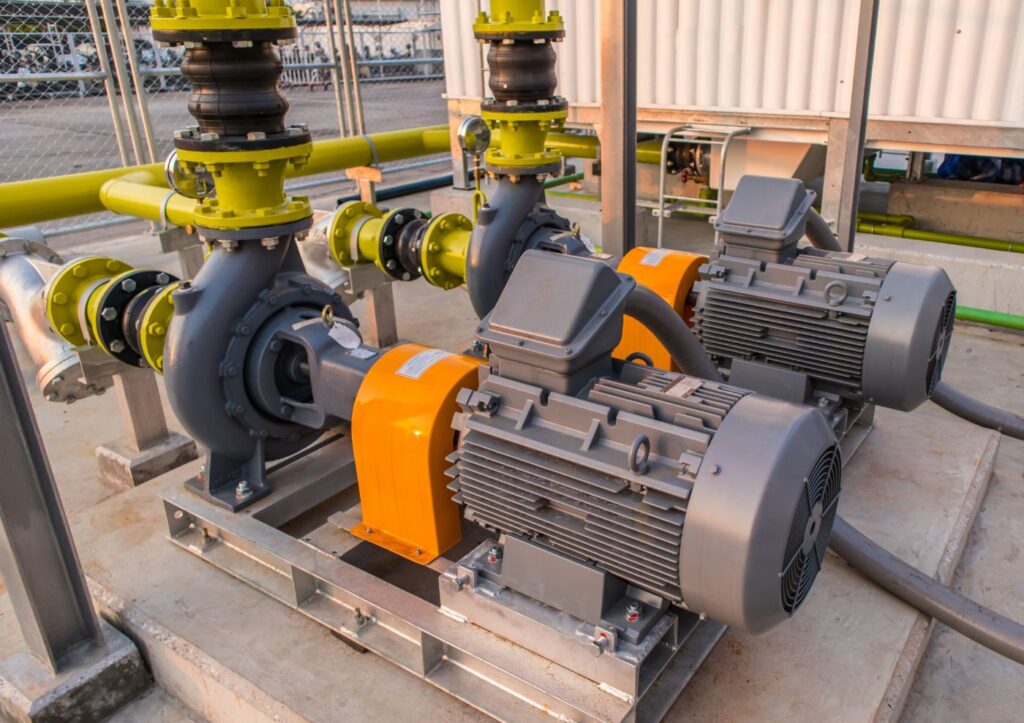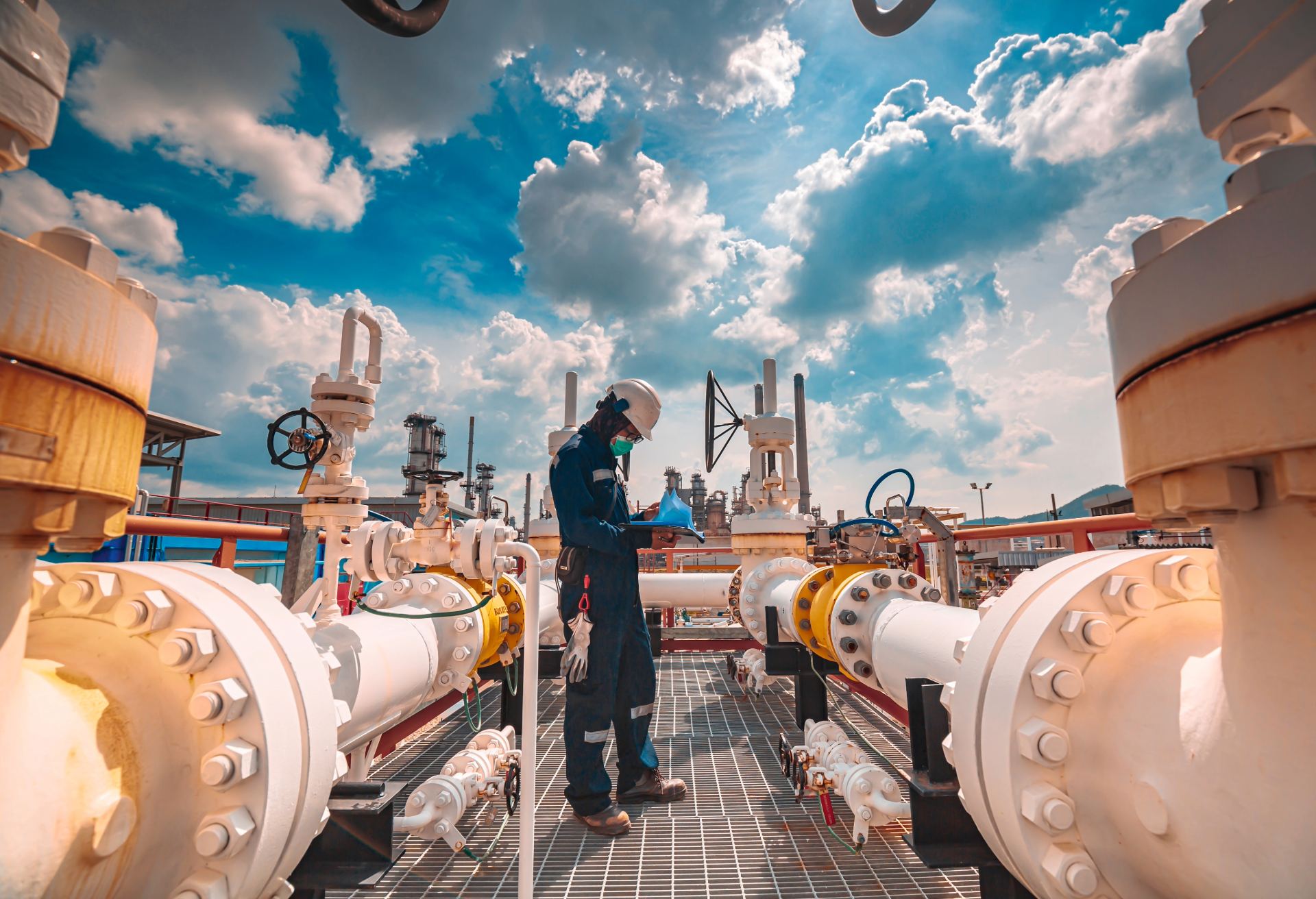Industrial pumps are the backbone of many critical systems across various sectors, including manufacturing, oil and gas, chemical processing, and wastewater management. These pumps move fluids, slurries, and chemicals through production lines and treatment facilities, making them essential to smooth and continuous operations. When a pump starts to malfunction or fails, it can bring production to a halt, cause environmental hazards, and result in costly emergency fixes.
That’s why proactive industrial pump repair is not just a maintenance task—it’s a strategic move to ensure uptime, efficiency, and long-term cost control. Addressing issues early can prevent catastrophic breakdowns, protect surrounding equipment, and extend the system’s lifespan. This is especially important for specialized units that experience heavy-duty applications, such as hydraulic pump repair in high-pressure systems or grinder pump repair in wastewater and sludge management.
In this blog, we’ll outline the top seven warning signs that your pump system may require immediate attention. Recognizing these symptoms early allows you to schedule a timely industrial pump repair before the problem worsens. Whether it’s a sudden drop in performance, unusual vibrations, or seal leaks, these signals shouldn’t be ignored—and taking action can protect your equipment and your bottom line.
Unusual Noises or Vibrations
One of the earliest and most obvious signs that a pump system is in trouble is the presence of unusual noises or excessive vibrations during operation. These symptoms often indicate mechanical issues such as misalignment, worn bearings, cavitation, or loose components. While it may be tempting to dismiss these sounds as minor annoyances, they are usually early warning signals that immediate industrial pump repair is necessary.
In systems that rely on precision and pressure control, such as those utilizing hydraulic technology, vibrations or screeching sounds may indicate internal wear, seal failure, or improper flow conditions. Hydraulic pump repair may be required if these noises are caused by cavitation, which occurs when vapor bubbles form and collapse violently within the pump. This not only damages internal components but can also severely impact system efficiency and reliability.
Similarly, grinding or rattling sounds in wastewater or lift station systems often point to a need for grinder pump repair. Grinder pumps are designed to handle solids and debris, and when components become damaged or misaligned, unusual noise becomes an unmistakable sign of trouble. Left unresolved, the issue can escalate to complete failure, causing backups, overflows, or damage to connected systems.
Ignoring these signs can lead to costly consequences. Unchecked vibrations accelerate wear on bearings and seals, often leading to shaft misalignment and more extensive damage. Over time, what could have been addressed with routine industrial pump repair turns into an expensive and disruptive replacement job.
Routine inspections and maintenance are crucial for identifying these issues early. Technicians trained in hydraulic pump repair and grinder pump repair can use vibration analysis tools and acoustic monitoring to pinpoint faults before they escalate. Acting on these signs not only extends the equipment’s life but also prevents costly downtime and unplanned shutdowns.
In summary, abnormal sounds and vibrations are your first line of defense. When detected early, they enable timely industrial pump repair, which can save thousands in repairs and lost productivity.
Decreased Flow Rate or Pressure

A noticeable drop in flow rate or pressure is often the first indicator that something is wrong with your pumping system. When a pump begins to underperform, it’s typically a symptom of internal problems such as impeller wear, internal blockages, valve malfunctions, or air entrainment. Left unaddressed, these issues can quickly lead to system failure. Recognizing and acting on this sign is crucial for timely industrial pump repair.
In hydraulic systems, pressure is everything. A sudden or gradual decrease can signal that the hydraulic circuit is losing integrity, whether from worn seals, internal bypassing, or cavitation damage. In such cases, hydraulic pump repair is necessary to restore consistent flow and maintain the efficiency of actuators and control systems. If ignored, the entire hydraulic operation can suffer, leading to overheating, poor performance, and ultimately, equipment breakdown.
Similarly, a drop in flow rate in a wastewater or sewage system often points to clogged or worn grinder components. Grinder pump repair becomes essential when the impeller can no longer effectively move solids due to wear, debris buildup, or motor inefficiencies. A compromised grinder pump may not only lead to slow drainage but could also cause backups, overflows, and environmental compliance issues.
Low pressure or weak flow should never be overlooked. In many cases, it’s a sign that components are deteriorating or that a blockage is impeding flow inside the pump casing or piping. Addressing the problem with early industrial pump repair can prevent more serious mechanical damage and reduce overall repair costs.
Technicians trained in hydraulic pump repair and grinder pump repair can perform performance tests to identify the root cause of the reduced flow. Whether it’s a worn impeller, clogged suction lines, or a faulty pressure valve, resolving these issues early ensures your system continues to perform as expected.
Ultimately, decreased flow rate or pressure is not just a minor inconvenience—it’s a signal that immediate industrial pump repair is needed. Acting quickly helps maintain process efficiency, prevent downtime, and protect the longevity of your equipment.
Overheating of the Pump or Motor
Excessive heat generation is a serious warning sign in any industrial pumping system. When a pump or motor begins to overheat, it typically indicates problems such as poor lubrication, mechanical misalignment, blocked cooling passages, or failing internal components. These conditions not only hinder performance but also lead to accelerated wear and the potential for total equipment failure if not addressed with timely industrial pump repair.
In hydraulic systems, overheating is particularly dangerous. These systems rely heavily on fluid dynamics to operate efficiently, and elevated temperatures can cause the hydraulic fluid to break down, damage seals, and warp internal parts. In many cases, overheating necessitates immediate hydraulic pump repair to prevent significant system degradation and avoid long-term operational losses.
Overheating can also be a concern in wastewater and lift station applications. If impellers become obstructed or motors overwork due to clogging, grinder pump repair is often necessary. A grinder pump running hot for too long may suffer motor burnout, insulation damage, or electrical failure—issues that can be far more costly if not caught early.
Temperature spikes reduce overall pump life and increase energy consumption as motors are forced to work harder to maintain flow rates. Routine monitoring of operating temperatures and quick action when heat-related issues arise are crucial steps in maintaining equipment reliability.
Whether it’s a grinder pump repair for a clogged impeller or a hydraulic pump repair to restore cooling efficiency, acting quickly with proper industrial pump repair helps prevent larger failures, extend pump service life, and reduce operational costs.
Frequent Tripping or Electrical Issues

Frequent tripping of circuit breakers or unexpected shutdowns are clear indicators that your pump system may be experiencing electrical faults, motor failure, or internal component wear. Overloaded circuits can cause these issues, deteriorated insulation, faulty motor windings, or short circuits within the pump itself. If left unchecked, such problems can lead to severe damage and operational downtime, making timely industrial pump repair essential.
Checking motor connections, voltage stability, and protective devices, such as overload relays and thermal sensors, is a necessary first step. Faulty or loose electrical connections can cause intermittent power loss and increased heat buildup, putting unnecessary strain on the system.
In systems handling high-pressure fluids, such as those requiring hydraulic pump repair, electrical irregularities can compromise safety and control functions. Likewise, in wastewater or sewage applications, grinder pump repair may be necessary if electrical issues arise from motor strain caused by debris or blockage.
Frequent tripping should never be ignored. Scheduling a full inspection and industrial pump repair at the first sign of electrical failure can help avoid more costly damage and keep your operations running smoothly.
Seal or Bearing Leaks
One of the most visible and concerning signs of pump failure is fluid leakage around the seal or bearing areas. If you notice oil, coolant, or slurry escaping near the pump shaft, it often indicates a worn or damaged seal. These leaks are more than just a mess—they’re an early warning that industrial pump repair is needed to prevent serious system damage.
When seals fail, they allow contaminants to enter the pump housing, compromising internal components. In hydraulic systems, a leaking seal can lead to pressure loss, fluid contamination, and overheating, all of which require immediate hydraulic pump repair to restore safe and efficient operation. In wastewater systems, leaking grinder pumps can allow untreated fluids to escape, causing environmental hazards and requiring prompt grinder pump repair.
Ignoring seal or bearing leaks can lead to motor failure, corrosion, and cross-contamination with other system fluids. Timely industrial pump repair not only fixes the immediate issue but also prevents further damage, protects surrounding equipment, and helps maintain compliance with safety and environmental standards.
Excessive Energy Consumption

A sudden rise in energy consumption is often a sign that your pump system is working harder than it should. When pumps become clogged, misaligned, or experience internal wear, they require more power to maintain flow and pressure. This inefficiency doesn’t just affect operating costs—it can also indicate deeper mechanical issues that warrant immediate industrial pump repair.
In hydraulic systems, worn seals, damaged valves, or partially blocked lines can cause a drop in system performance while forcing the motor to run longer cycles. This increases energy use and can eventually lead to overheating, breakdowns, and the need for hydraulic pump repair. Similarly, in wastewater treatment operations, grinder pumps struggling with solid buildup or impeller wear consume more electricity while delivering less output, signaling the need for grinder pump repair.
Unusually high energy bills or fluctuating power usage patterns should prompt a thorough review of the system. Scheduling industrial pump repair at the first sign of inefficiency can restore performance, extend equipment life, and reduce unnecessary power consumption. Timely intervention also helps prevent larger failures that are more costly to fix in the long run.
Irregular Start/Stop Cycles
Pumps that start and stop erratically or cycle more frequently than usual often indicate underlying issues with the control system or internal components. These irregular patterns may be caused by faulty sensors, pressure switch failures, or mechanical wear—all of which demand prompt industrial pump repair to prevent further complications.
In hydraulic systems, rapid or inconsistent cycling can disrupt fluid pressure, leading to instability in downstream equipment. These fluctuations often indicate valve malfunctions or seal degradation, making hydraulic pump repair crucial for restoring consistent operation and protecting other system components.
Grinder pumps are also vulnerable to damage from irregular cycling. Frequent startups can cause overheating, increase motor wear, and reduce efficiency. If solid waste is not being cleared properly due to timing issues, grinder pump repair may be necessary to correct the problem before it escalates.
Ignoring erratic pump behavior can lead to excessive energy use, equipment failure, and costly downtime. Timely industrial pump repair, supported by proper system calibration and diagnostics, helps maintain smooth operation and extends equipment life. Whether it’s a control fault or a mechanical issue, prompt action is crucial to preventing larger failures.
Conclusion
Recognizing the early warning signs of pump failure is essential to avoiding costly disruptions and equipment damage. From unusual noises and overheating to irregular cycling and increased energy use, these symptoms are clear indicators that industrial pump repair should not be delayed. Addressing issues like seal leaks, electrical faults, or performance drops can significantly extend the life of your equipment and ensure uninterrupted operation.
Timely industrial pump repair is especially critical in systems involving high-pressure applications, where hydraulic pump repair may be required to prevent system instability. Likewise, in wastewater and solids-handling systems, grinder pump repair helps maintain proper flow, prevent backups, and ensure compliance with safety standards.
To safeguard your operation, it’s essential to schedule routine inspections and respond promptly to any signs of trouble. Investing in proactive industrial pump repair, including grinder pump repair, is a smart strategy that protects your equipment, reduces downtime, and keeps your facility running at peak efficiency.



